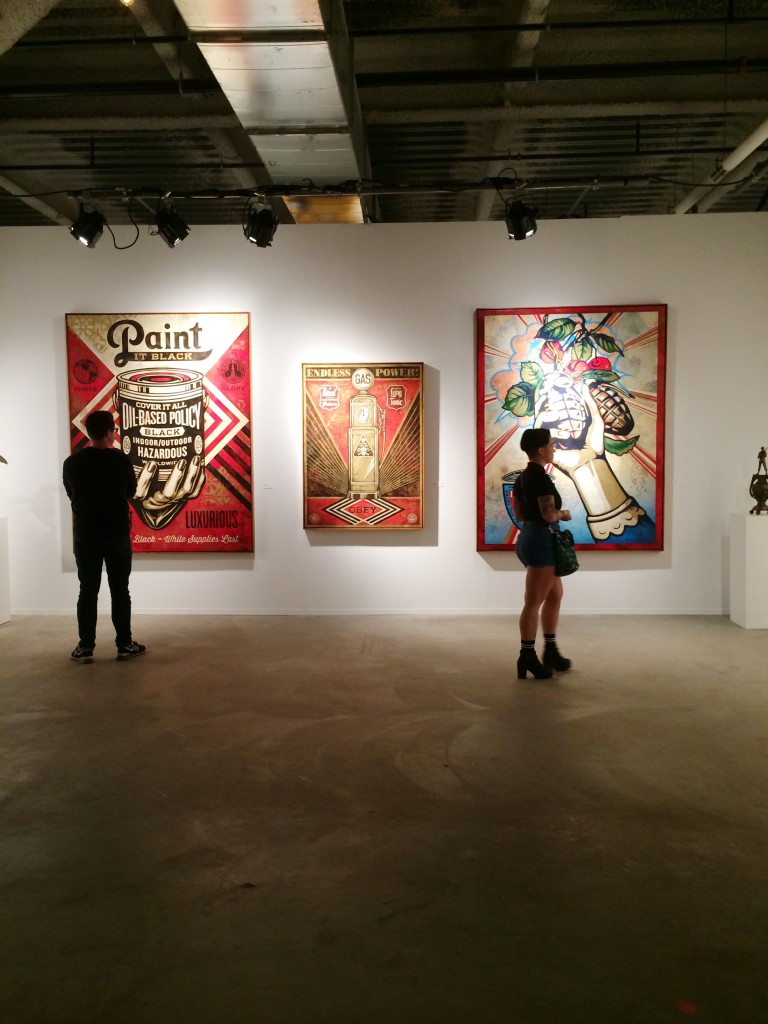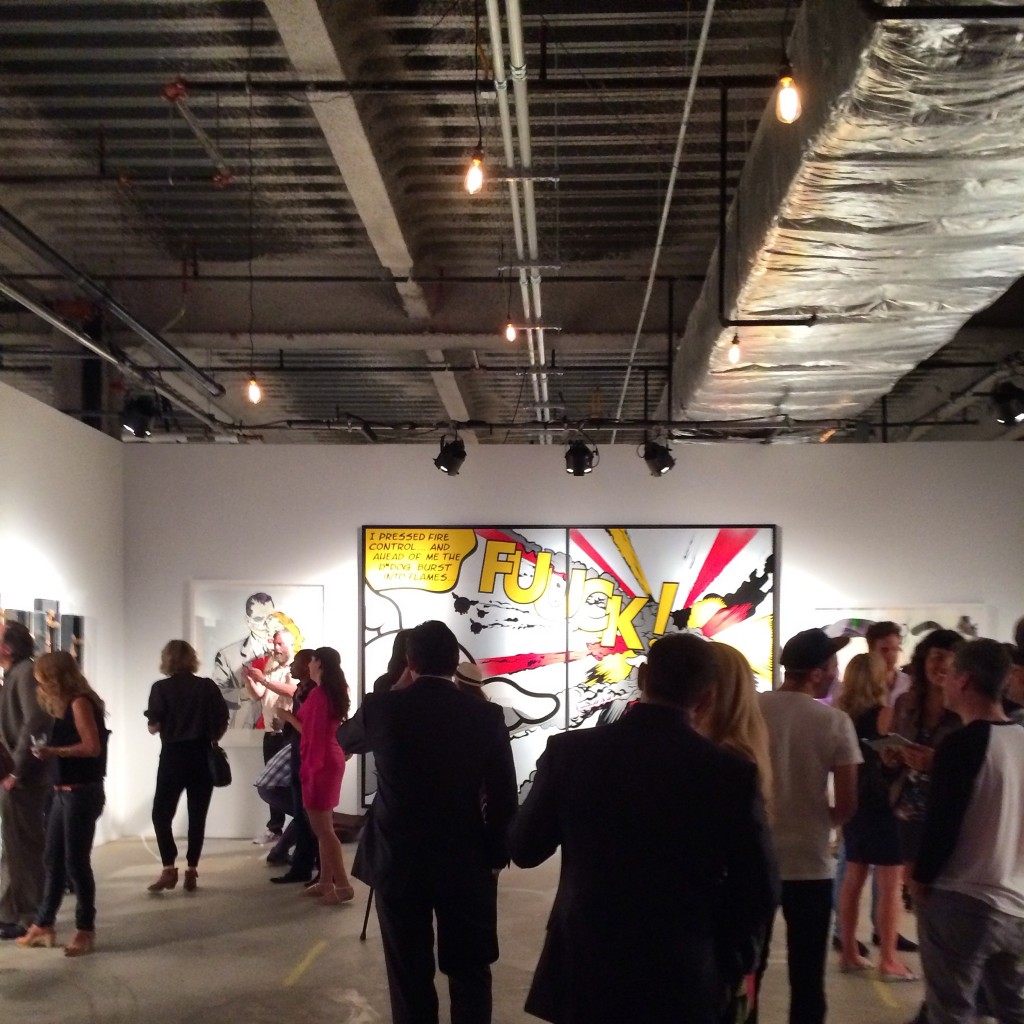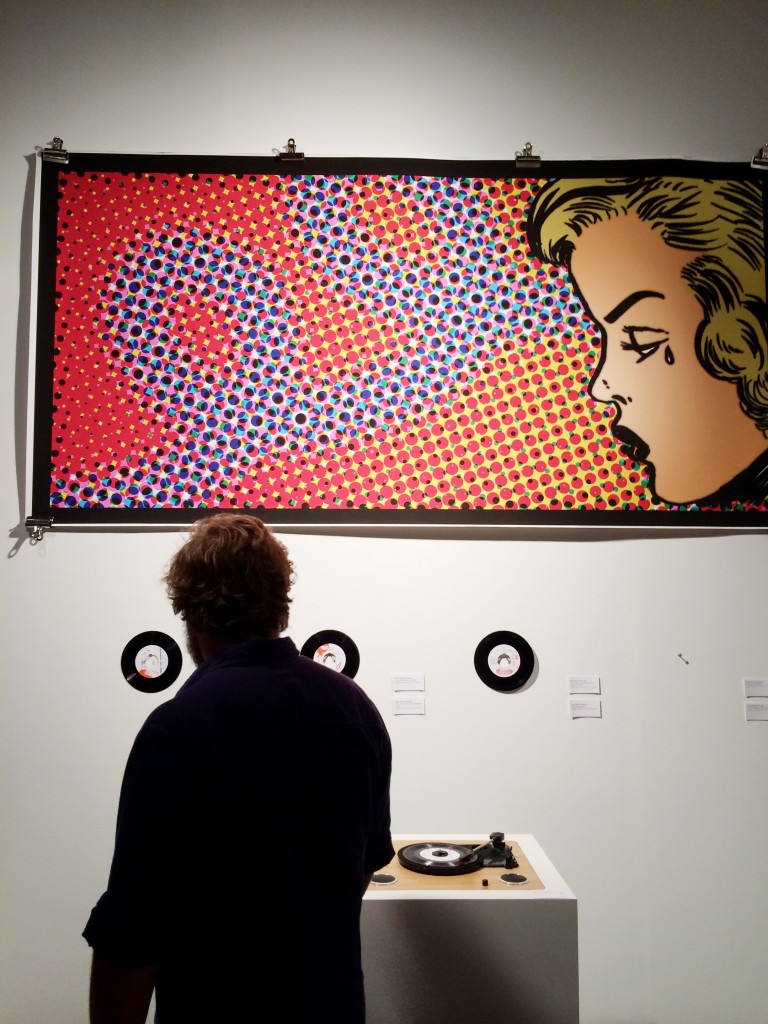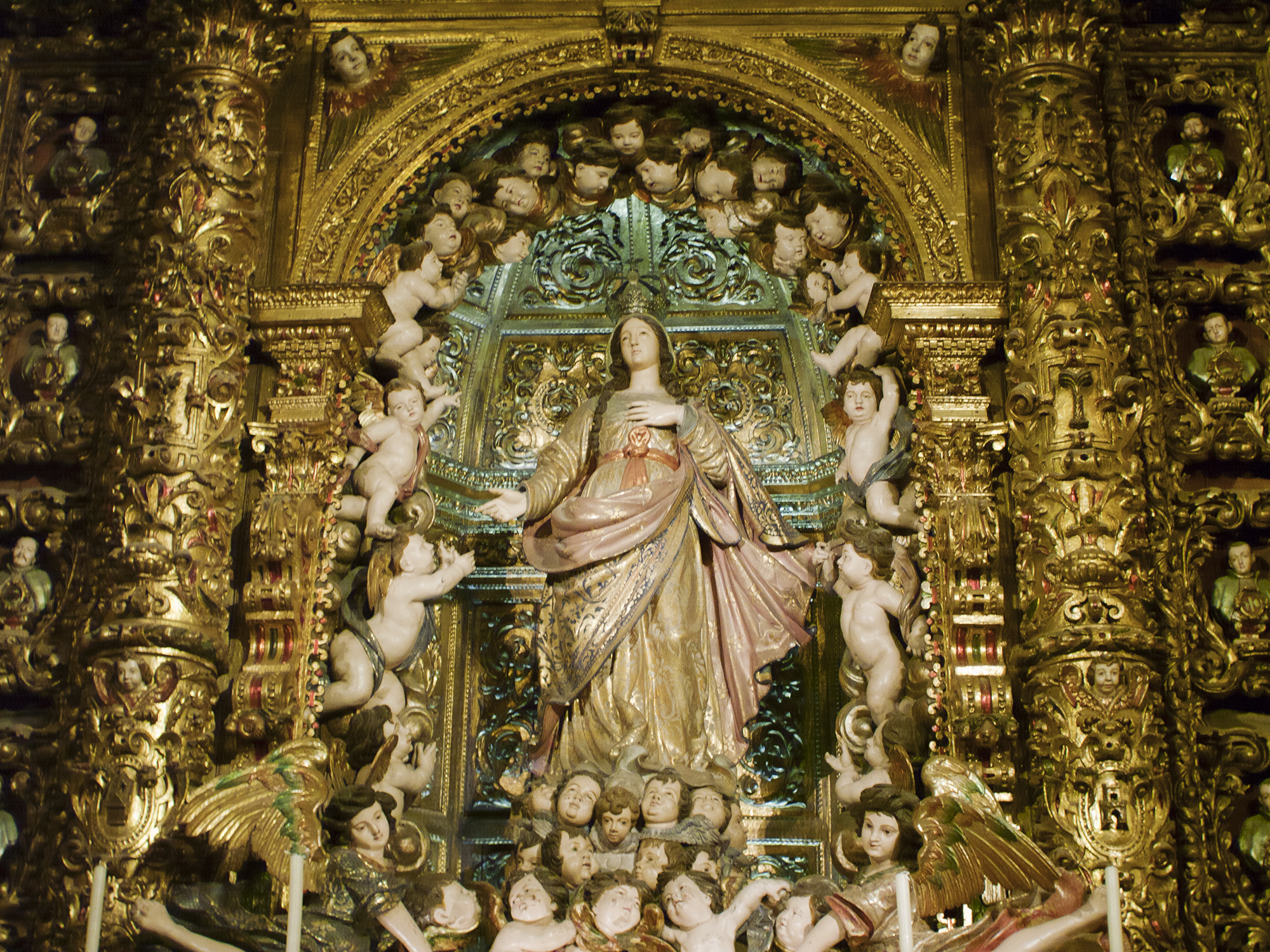The Provocateurs Sells Out

The $15 admission price to The Provocateurs, the group art show organized by the Art Alliance and curated by Shepard Fairey in conjunction with Lollapalooza, bought me unlimited beers, all the sliders I could eat, and access to art that ran a gauntlet from gorgeous to gregarious.
More than a mere gallery setup, the five-day event was a combination of entertainment of all kinds. Blending music and artist discussions with a nod to what was heavily marketed as “community interests,” the show also donated a portion of ticket sales to an organization that fosters art education opportunities for underserved youth.
On opening night, the vibrant energy of the attendees was palpable, smacking of the frivolity that permeates every Lollapalooza weekend. Over the show’s run, thousands made their way to the space at luxury mall Block 37 in downtown Chicago, and an invite-only special event featuring a performance from Nas (with a nod to a “celebration” of the launch of a limited edition Fairey-decorated Hennessey cognac bottle) provided an opportunity for the city’s elite to hobnob with club kids.
Guards carefully monitored the entrance and exit to the exhibit space to ensure that patrons would trek a predetermined path into and out of the mall, inadvertently directing them away from the adjacent Chicago Design Museum, which was open and awaiting the crowds in order to share a more permanent form of local culture.

As Fairey had explained in preshow interviews, the point of showing in partnership with the festival was to reach beyond the art world and attract a democratic audience of cultural savants. Mimicking what he described as the commonality of all exhibiting artists in the show as having shared “DIY” roots, nearly every piece did feel extremely approachable.
Despite the space having the feeling of a retail showroom with works grouped thematically, there were some gems amidst the noise. D*FACE’s F**K (2013), a Lichtenstein-esque enamel and acrylic on canvas emulsion taking up a whole gallery wall, popped so loud amidst the drum-and-bass DJ set that more patrons were snapping selfies in front of the work than getting down on the dance floor. Fairey’s section featured some of his newer stencil-on-canvas work inspired by product labels amidst some of his earlier prints, all arranged in a shrine-like enclave. The work was strong and offered a solid, solemn lingering point amidst the show’s jumble of voices.


The highlights were quietly clever, tricking viewers with brimming colors into coming closer to find unexpected humility. A wall of acid-trip neon abstract figure paintings by Richard Colman hypnotized with Rorschach test waves, while Clare Rojas’ geometric oil paintings channeled Bauhaus-inspired order and comforting saturated primaries. Mark Mothersbaugh’s installation of the large inkjet print Pixilation and Teardrop (2014) suspended over a record player and a set of original vinyl encouraged visitors to switch out each edition to hear an array of twangy, stream-of thought musings on love.
Despite a sinking feeling of the sheer branded-ness of The Provocateurs, the sense of the show being helicoptered in and sealed away as a ticketed spectacle atop the tower of Lollapalooza pageantry, the heart of the more successful work on display was uniquely raw, unapologetic and optimistic. As I left, weaving around Andre the Giant-stickered recycling bins, I saw Mr. Fairey himself. He was unabashedly dancing to the pounding decibels of the DJ, onlookers stepping in time with him in awe or gazing at him from their perches atop adjacent leather sofas.
Three uncomfortable-looking men in expensive suits eyed me from a corner, then turned their attention back to Fairey, the impresario behind it all.







